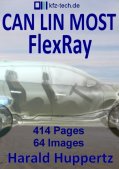|
|
|
||||||||||||||||||||||||||||||||||||||||||||||||||||||||||||||||||||
| |||||||||||||||||||||||||||||||||||||||||||||||||||||||||||||||||||||
|
|
A
B
C
D
E
F
G
H
I
J
K
L
M
N
O
P
Q
R
S
T
U
V
W
X
Y
Z
| ||||||||||||||||||||||||||||||||||||||||||||||||||||||||||||||||||||
| Fiat Dino | |
| Engine | V-six-cylinder (65°) |
| Displacement | 1987/2418 cm³ |
| Bore * stroke | 86 * 57 / 92,5 * 60 mm |
| Crankshaft | Four bearings |
| Compression | 9 : 1 |
| Cylinder block | Aluminum, wet liners/cast iron |
| Engine control | 2 DOHC (2 chains and gear drive) |
| Valves | 2 per cylinder, 2 springs per valves, sodium-cooled outlet |
| Mixture formation | 3 double carburetor |
| Fuel supply | Electrical |
| Oil | Approx. 7 liters |
| Torque | 172/216 Nm at 6000/4600 rpm |
| Max. power | 118/132 kW (160/180 hp) |
| Rated speed | 7200/6800 rpm |
| Powertrain | Front engine with rear drive |
| Clutch | Two-discs |
| Transmission | Five speed Fiat/ZF |
| Axle drive | Lock |
| Front suspension | Double wishbone |
| Rear suspension | Rigid axle, leaf spring, semi-trailing arm |
| Vibration dampers | 2 per wheel |
| Brakes | Discs/servo |
| Wheelbase | 2550 mm |
| Tyres | 185 HR 14 (6,5") / 205/70 HR 14 |
| Length | 4510 mm |
| Width | 1700 mm |
| Height | 1290 mm |
| Basic weight | 1220/1400 kg + driver |
| Top speed | Approx. 200/205 km/h |
| Sales price | Approx. 26.000 DM (1970) |
| Manufactured | 1967-69 / 1969/72 |
It is not the only Fiat sport product, where the spider appears before the coupe. One has the feeling that in this project is almost involved the entire Italian automotive industry. In addition to Fiat and Ferrari, there is the company Weber, responsible for the rich mixture preparation. Whose boss has been even heavily involved with the deal between the two different producers. In addition, the orders to design are going to Bertone for the coupe and Pinifarina for the spider. You can save more listings, maybe mention the rims of Cromodora with the pretty Dino emblem.
Not unusual for Fiat is that the wheelbase is significantly larger in the coupe than in the spider. The interior also shows it as a convenient travel coupe. It is less about the last bit of performance. Although convertibles usually have the higher weight, it is just the opposite in case of the Dino.
How it ever comes to this common project between Ferrari and Fiat? The motor was designed about 10 years earlier. The son of the Commendatore has to be essentially contributed to just before his early death. Hence the name 'Dino'. The engine should have even won races. It could - after long break - be interesting again for the next Formula 2 season. Unfortunately, the regulations require 500 cars, which Ferrari can neither built nor sale in foreseeable future. So the deal is contrived with Fiat that benefits both sides. It is actually the beginning of a slow acquisition process.
And what will change in 1969 during a long break at the two Dinos? Quite a lot, if only for advantage, there the experts differ about. Let's start with the rear axle. Although leaf-spring axles - albeit a little earlier - also to find at Ferrari some tester takes this amiss the cheap Fiat Dino. Of course you have to save time and money for the development and production and make use of the modules of the middle class sedan. Compare once the wheelbases of the spiders of the time!
What matters, however, is the result. And as attested to the Dino, it is with double dampers and additional struts a very well controllable vehicle with a wide safety range. The advantage of this design has been the change to the semi-trailing link axle. Which may bring less unsprung weight percent, but the vehicle in total is clearly heavier. It gets logically an engine with a larger displacement, which put on further 30 kg through its cylinder block now from cast iron. In total the second edition of the Dino has 180 kg more weight, which undo the extra power of the larger engine when accelerating. But the car becomes clearly more elastic in the lower speed range.
2001-2015 Copyright programs, texts, animations, pictures: H. Huppertz - E-Mail
Translator: Don Leslie - Email: lesdon@t-online.de

